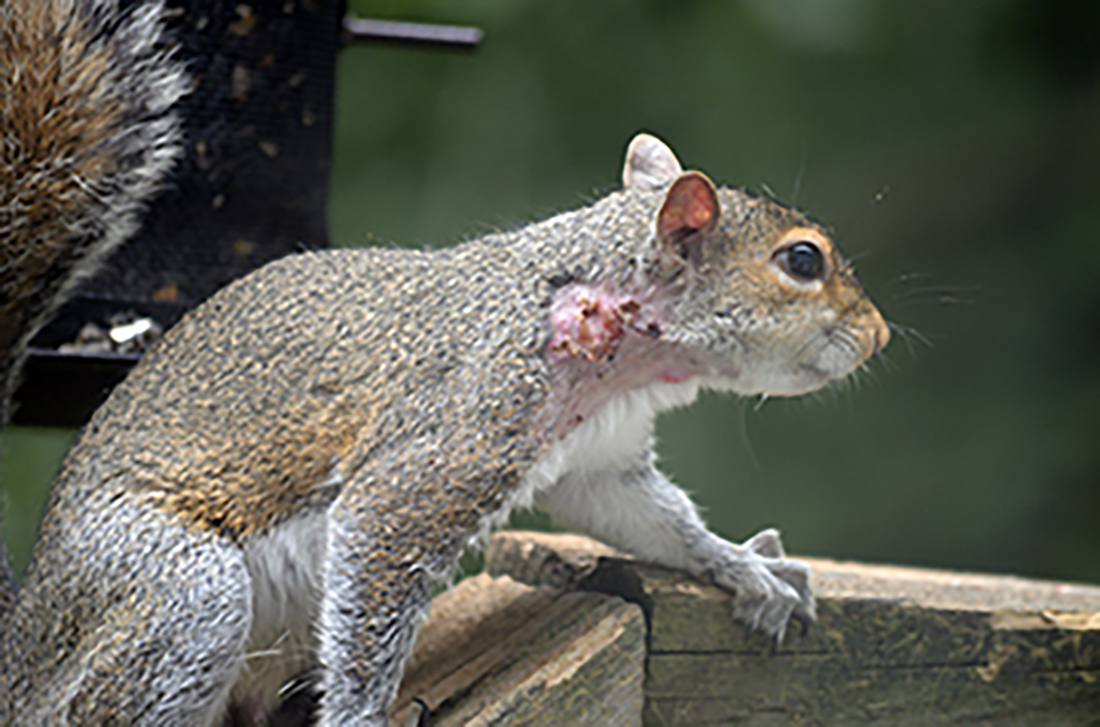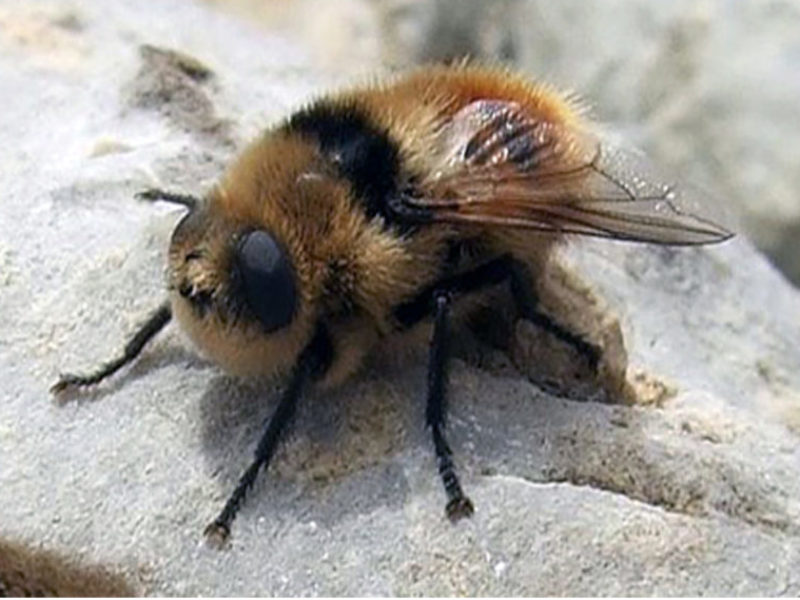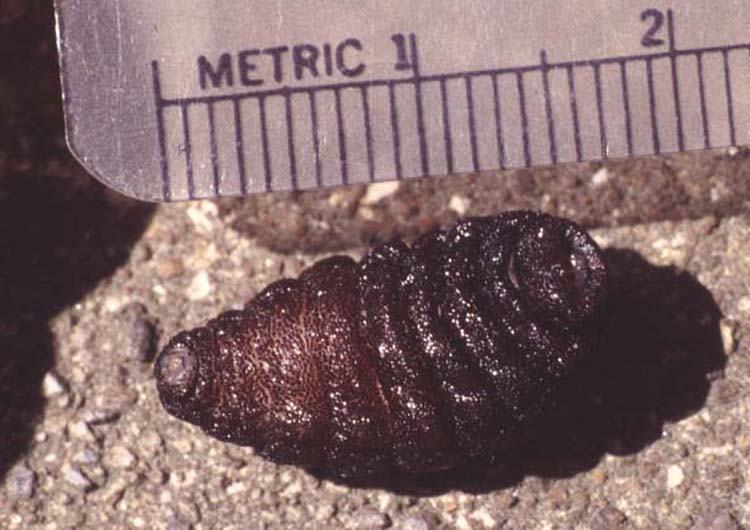The Evil Bot Fly!
One day while looking out of my window, I noticed a small squirrel who had come on my porch to eat from my bird feeder. I love squirrels and enjoy when they visit, but on this day I was sickened and horrified by the sight of this particular squirrel. The poor, little fellow looked like he had been ravaged by a wild animal.

I felt so bad for the little guy and wanted desperately, but I had no idea how to help me. I knew as soon as I touched the door knob he would flee. So I quickly grabbed my camera and got this shot of him and watched quietly as he ate and scurried away.
After he was gone I got the address for the Board of Veterinary Medicine for the state I live in and I sent them an email with the photo attached and asked them if they would please tell me how to help this poor squirrel.
Much to my surprise their answer was quick and extremely informational. They informed me that the squirrel hadn’t been attacked by any animal as I had thought. Instead, they advised me that it was, in fact, infested by an insect called the Bot fly!
I was dismayed. I had gone to college for 4 years and obtained 2 degrees in the animal field, yet I had never once heard about Bot flies. The advice in the email I had received told me that they are actually a normal part of life for animals and that as long as the squirrel was able to eat and drink that it would most likely survive and heal. For me, that just wasn’t enough information. I wanted to know all about these pesky insects and if there was any way to prevent them from causing such appalling injuries to other squirrels. So I did some research and what I learned stunned me. I think it’s important enough for everyone to know about, especially when I discovered, much to my horror that Bot flies can affect humans as well as domesticated pets.
After a lot of research the following is what I discovered about the Evil Bot fly. I sincerely hope that you will take the time to read this information and pass it on to others. Also, PLEASE NOTE that the images included in this post are graphic and are NOT for young children or those with weak stomachs. These nasty pests truly ARE Evil!
- Bot flies live in all all of the United States, except Alaska, and Mexico, and South and Central America.
- Adults are large, about 5/8 inches long with large, black eyes. They are black with pale yellow markings and smoke colored wings.
- Their infestations usually occur in June through September.
- The infest all mammals including humans and their pets.
The way infestation happens is, the female Bot flies lay eggs on other insects, such as mosquitoes, vegetation, fungus, algae or rocks. Then about one week after the eggs are laid, they are ready to hatch. For them to hatch successfully they must come into contact with a warm body which causes an increase in temperature. Once in contact with a warm body, the egg hatches within a few seconds.
Full Grown Bot Fly Larva
Once hatched, the larva climbs aboard the mammal and crawls around the body looking for an opening, such as a mouth, eye, nose or anus to enter. Then it moves through the body for about 5 days and ends up in the tissues just below the skin. It then eats its way to the muscle cutting a breathing hole through the skin and continues to grow for approximately 21 days.
The rear end of the larva sticks out slightly at the opening. It is dark brown and covered with short, stiff cone shaped bristles. Once its fully grown it pulls itself out of the mammal leaving a wound that is sore and inflamed. Some mammals can die from excessive Bot fly infestation. Bot flies can be removed and treated by Doctors or Veterinarians.
In the video below a poor squirrel is infested with Bot Fly Larva.
The video below shows Bot Fly removal from a human.
The following are ways in which to help prevent Bot Flies:
- Insect repellents in your home, be sure to thoroughly spray near your windows, curtains, doors, yard and gardens.
- Wear protective clothing whenever outside.
- Keep surroundings clean. Bot Flies are attracted to cool, wet, and dirty environments.

